
All categories
Featured selections
Trade Assurance
Buyer Central
Help Center
Get the app
Become a supplier

(2509 products available)

















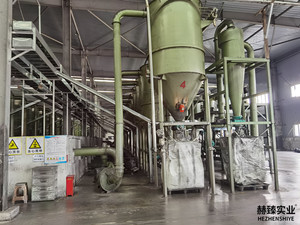
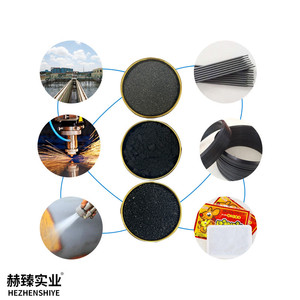










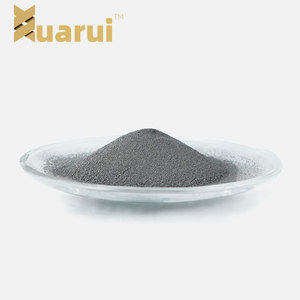


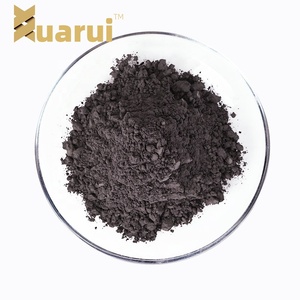




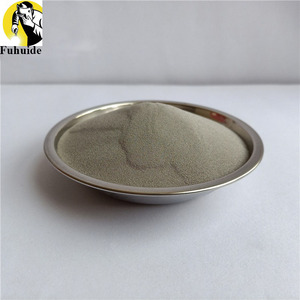


Iron-based alloy powders are vital in various industrial applications, particularly in powder metallurgy and additive manufacturing. Here are some common types of these powders used in multiple business contexts.
Stainless steel powders are highly valued for producing corrosion-resistant components. It contains significant amounts of chromium, nickel, and molybdenum. These additions enhance the material's resistance to rust, oxidation, and chemical degradation. In industries such as automotive, aerospace, and medical devices, stainless steel powder is employed to manufacture components exposed to harsh environments. In addition, medical implants benefit from stainless steel powders because of their biocompatibility and resistance to sterilization processes.
Cobalt-based alloy powders are employed widely in applications requiring heat resistance and wear properties. Usually, these alloys include cobalt, chromium, tungsten, and nickel. Therefore, they are ideal for aerospace and energy applications, particularly in components exposed to extreme temperatures, such as turbine blades and combustion chambers. Their durability and corrosion resistance make them a suitable alternative for components operating under such demanding conditions.
Tool steel powders consist of high-carbon steel alloys embedded with elements like tungsten, vanadium, and molybdenum. They are widely useful in producing precision tooling, dies, and molds. Those who manufacture cutting tools and industrial machinery components in metalworking or mining rely on tool steel powders. The choice of tool steel powder in these industries results from their capacity to withstand wear and maintain hardness in high-stress situations.
Copper-based alloy powders contain copper mixed with other metals like tin, nickel, or aluminum. These powders combine excellent electrical and thermal conductivity with good mechanical sturdiness. In the electrical and automotive sectors, users frequently employ copper-based alloys to produce connectors, heat sinks, and electrical motors. For example, nickel-bronze powders are commonly used for marine applications because they are corrosion and wear-resistant. At the same time, aluminum bronze is used for the manufacture of parts that require both the conductivity of copper and the strength of aluminum, such as shafts and pumps.
The choice to use iron-based alloy powders spans multiple industries. They serve in powder metallurgy, 3D printing, and the production of wear-resistant components. Therefore, understanding these powders' applications and qualities will enable buyers to make informed decisions that align with their goals in various business applications.
The automotive industry often uses iron-based alloy powders to manufacture engine parts, gears, and brake components. Iron-based alloys like iron-copper powder or iron-nickel powders offer the required mechanical properties, such as strength and wear resistance. Alliance Automotive Parts, for example, relies on these powders to produce gears with superior strength and durability. In addition, they use iron-based alloy powders to create porous materials for oil filtration in engine components, improving efficiency and component longevity.
The aerospace industry uses iron-based alloy powders for airplane and rocket engine components containing stators, rotors, and turbine blades. Though rare, this industry sometimes employs iron-based materials due to their favorable magnetic properties. For instance, an airplane component manufacturer might utilize iron nickel powder for its stability under extreme temperatures and minimal thermal expansion. Besides, the powder can be used to produce lightweight yet sturdy components, which are essential for improving fuel efficiency and performance. Furthermore, because of their outstanding mechanical strength and reliability in such critical applications, iron-based alloy powders are vital in this sector.
The production of cutting tools, dies, and other heavy machinery components uses iron-based alloy powders. Usually, these powders are designed for high wear resistance and hardness, which are crucial in these applications. For instance, a metal powder provider might supply tool steel powder to manufacture high-performance cutting tools with exceptional edge retention. They may introduce iron-based alloy powders that enhance the strength and wear resistance of components used in high-stress situations in these industries.
In the manufacture of medical instruments, implants, and prosthetics, such as powders are occasionally employed. These powders are frequently formulated to be biocompatible while retaining the strength and durability expected in medical devices. For example, stainless steel powders are frequently used to make surgical instruments and implants that resist corrosion and wear. As a result, hospitals rely on iron-based alloy powders to manufacture high-strength, lightweight bone implants with superior biocompatibility for bone regenerative solutions.
In energy applications, iron-based alloy powders form components for wind energy systems and batteries. These powders' magnetic properties are useful for producing generator components used in wind turbines. In addition, iron-based materials are critical in manufacturing electrodes and current collectors in lithium-ion batteries. For instance, an iron-based alloy powder could be used to create battery anodes with higher energy density and longer life.
Iron-based powders have a wide range of grades, particle sizes, and compositions. But these powders usually have distinct qualities and characteristics, making them suitable for various industrial uses. For example, typical specifications of iron-based powders include particle size distribution, morphology, purity, atomization method, addition elements, magnetic properties, and flowability. However, the following section focuses more on the product features and specifications.
Particle Size Distribution
The reason why particle size distribution is important is that it influences packing density, flow characteristics, and sintering behavior in powder metallurgy processes. Usually, most manufacturers offer iron-based alloy powders in various particle size ranges, like 10-45 micrometers. They do it to enable customers to fine-tune their manufacturing processes to specific application needs.
Morphology
The powders' morphology impacts the powder's flow and packing characteristics during the manufacturing process. Manufacturers may produce powders with irregular or spherical particles based on customer needs. Spherical particles frequently have superior flow characteristics, while irregular particles offer better interlocking for increased density in compacted parts.
Purity
In iron-based alloy powder applications where performance and safety are crucial, such as the aerospace and medical industries, powder purity is essential. Here, any contamination can severely impact the mechanical properties and corrosion resistance of finished components. Manufacturers usually ensure high purity levels in their iron-based alloy powders for clients prioritizing quality.
Tailored Compositions
The composition of iron-based alloy powders can easily be tailored for specific target applications. For example, adding copper improves the powder's compressibility, making it ideal for producing high-density components. Adding nickel enhances wear and corrosion resistance, making it suitable for components exposed to harsh environments.
Enhanced Mechanical Properties
The superior mechanical properties of iron-based powders are among their most notable features. They efficiently provide increased tensile strength, hardness, and thermal stability. Therefore, making them ideal for applications such as tooling, automotive parts, and chemical reactors. Additionally, these powders have outstanding wear resistance, extending the life of components in demanding applications.
Sustainability
Iron-based alloy powders are more environmentally friendly than many other types of powder used in industry. Most times, manufacturers create them from recycled materials. As a result, this reduces the environmental impact of raw material extraction. Further, the efficiency of 3D printing technologies powered by these powders results in less material waste during production, assembly, and machining.
The good thing about working with iron-based alloy powders is that they don't need any special handling or complicated safety procedures during storage, transport, or installation. Businesses using this powder in manufacturing should follow the standard procedures for dealing with fine powders to guarantee safety and efficiency. The steps include carefully moving powders using dedicated tools like pneumatic conveyors or feeders. They must also compact the powder using a mechanical or hydraulic press to manufacture shaped parts. Lastly, they should sinter the compacted material in a high-temperature furnace.
The good thing about iron-based alloy powders is their versatility. Although they are useful for various industrial purposes, healthcare and aerospace are two industries they shouldn't be used in. The reason is that the purity and quality of these powders must meet strict standards in these two industries. Thus, it is essential for businesses to collaborate directly with reliable suppliers who prioritize quality controls. So, here are some quality and safety factors to consider regarding these powders:
Impurities in the powder can lead to poor product performance, such as decreased strength or increased corrosion susceptibility. Thus, refining processes for iron-based alloys should ensure that the resulting powder has minimal impurities. Also, when purchasing iron titanium powder and other iron-based powders, business owners should ensure they work with trustworthy suppliers who provide detailed reports on material composition.
The reason particle size is crucial to the quality of iron-based alloy powders is that it affects how well the powder mixes flows and compacts in manufacturing processes. Additionally, inconsistent particle sizes often lead to uneven mixing, resulting in products with varying mechanical properties. So, when sourcing these powders, buyers should prioritize vendors who have quality control programs that monitor particle size distribution.
Fine powders, like iron-based alloy powders, can pose safety risks if not handled properly. The reason is that they can create dust clouds that explode or fire up. Therefore, manufacturing facilities should have appropriate ventilation, dust collection, and personal protective equipment (PPE) in place to protect workers and reduce explosion risk.
The most effective way to guarantee the safety of iron-based alloy powders is by ensuring they meet relevant industry standards. This includes OSHA and ISO. Coordination with suppliers who have certifications and comply with industry standards can significantly reduce the safety risk associated with these powders.
A1. No, they do not have a fixed shelf life. Quality will only decline if they aren't stored in the right conditions. In other words, exposure to humidity and high temperatures will affect the powder's quality. Therefore, keeping them in a cool, dry area will maintain their efficacy for a long time.
A2. The basic storage requirement for these powders is keeping them dry and cool. In addition, using sealed containers to prevent moisture and air contamination is great. Iron-based alloy powders can also be refrigerated for long-term storage.
A3. Yes, handling any fine powder comes with safety concerns. One of these concerns is the risk of fires and explosions. The reason is that fine particles can form airborne dust. Luckily, using the proper PPE and equipment can mitigate these risks.
A4. Yes, manufacturers often use atomization and mechanical milling to produce iron-based alloy powders. They do this because these techniques result in powders with a uniform particle size distribution. Thus improving the powder's flow and compacting characteristics during the production process. Overall, these two methods are the preferred alloy powder production methods because they balance cost-effectiveness and powder quality.
A5. Due to their mechanical properties, they have become very popular in additive manufacturing. In other words, they are perfect for producing complex components used in industries like aerospace, automotive, and tooling. Plus, businesses like these can now make intricate designs that conventional manufacturing methods can't achieve.